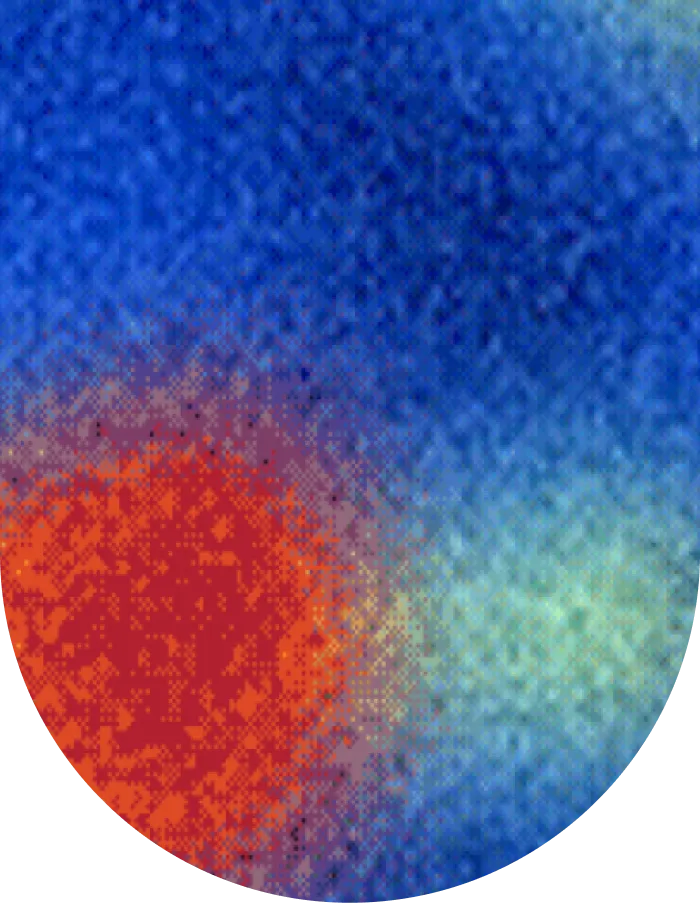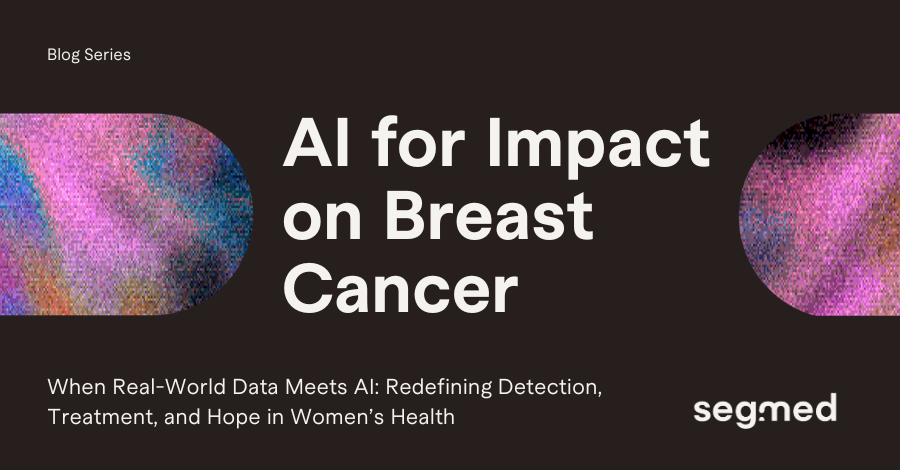Real-World Imaging Data in Oncology: Paving the Way for Breakthroughs in Breast Cancer Treatment

Reading time /
4 min
Industry


The field of cancer management is evolving in important ways with the incorporation of medical imaging and real-world evidence (RWE). In breast cancer, which is the most common cancer in women, real-world data (RWD) provides novel perspectives that are driving important advancements. Using RWD to develop RWE has become an essential method of supplementing more traditional clinical trials. Real-world imaging data encompasses various imaging modalities, including mammography, MRI, and digital breast tomosynthesis. When combined with clinical and pathology data, this radiology data enhances patient care by promoting informed decision-making and patient-centered care. This is of utmost use in oncology, where tumor heterogeneity and patient differences are paramount. Real-world imaging data enable more granular subgroup analysis and tracking of outcomes in populations typically excluded or underrepresented in clinical trials. Real-world studies have used imaging data, for example, to support the effectiveness and safety of newer agents in patients with HER2-positive and HER2-low metastatic breast cancer. Examples include trastuzumab deruxtecan and tucatinib, with outcomes assessed beyond phase 3 trial populations.
The request for RWE in terms of understanding patient pain points and unmet medical needs is increasing, particularly for patients with advanced breast cancer and involved stakeholders. All of this is changing rapidly, particularly in oncology, and has become more common based on the volume of studies and regulatory decisions in recent years.
Real-world radiological data provides greater precision in the identification of early-stage disease, assessments of risk, personalization of therapy, and management of treatment. It also improves efficiency in accelerating drug development by capturing the real variability of patients and clinical settings. Some of the most prominent oncology research centers, regulators, and providers globally will incorporate real-world radiological data into workflows for breast cancer to improve patient outcomes.
Integrating Imaging Data with AI and ML
The real-world imaging data's full capacity is enhanced by recent developments in artificial intelligence (AI) and machine learning (ML). Currently, deep learning models are equalling or surpassing the performance of expert radiologists in breast cancer detection using mammography, decreasing rates of false negative cases, and improving rates of early detection. In addition to assisting with breast cancer screening, AI-enabled tools are being employed in the area of automated tumor segmentation, volume estimation, and tumor surveillance. These applications will be important for evaluating response to treatment and supporting personalized treatment adjustment.
Machine learning models that combine imaging with clinical and pathological information have demonstrated robust cancer progression predictive ability. For example, they can predict the likelihood of lymph node metastasis with performance equal to or exceeding that of expert clinicians and pathologists. Such models will help decrease unnecessary biopsies and surgeries and improve patient quality of life by decreasing the number of invasive procedures. In the same vein, the application of radiomics, or extracting quantitative features from images with the help of AI, gives a more robust characterization of the tumors. It also helps predict treatment responses, and also provides additional applications for precision oncology.
A Few Notable Examples: Incredible Progress in Breast Cancer Treatment Efforts Using Real-World Imaging Data
Innovations in real-world imaging data, driven by the application of AI and merging with clinical health data, are advancing breast cancer management. They enable earlier detection, more accurate risk prediction, and precise therapy modalities. Below are a few outstanding examples -
Tucatinib Supported by Real-World Data
Tucatinib, approved in combination with trastuzumab and capecitabine for HER2-positive metastatic breast cancer, including patients with brain metastases, has been evaluated in real-world practice. Retrospective real-world data cohorts confirm that many patients receiving tucatinib in routine care present with central nervous system involvement, where brain MRI and CT remain essential tools for monitoring intracranial progression. In U.S. cohorts of roughly 200 patients, median real-world time to treatment discontinuation (rwTTD) was about 6.5 months, time to next treatment (rwTTNT) about 8.7 months, and overall survival (rwOS) about 26.6 months, findings broadly consistent with the pivotal HER2CLIMB trial. Importantly, real-world follow-up, often including MRI in patients with CNS disease, has been consistent with trial data showing meaningful intracranial activity and delayed CNS progression. These observations support tucatinib’s effectiveness in broader, more heterogeneous clinical populations.
Improved Detection With Digital Breast Tomosynthesis (DBT)
DBT, an advanced form of 3D mammography, allows for higher detection rates of cancer than 2D mammography at the average density of breast tissue. The exploratory evidence from real-world studies indicates that DBT yields fewer false-positive results and increases rates of both early-stage and invasive cancer, leading to timely and streamlined management.
AI-Assisted Mammography for Improved Diagnostic Precision
AI models that have been created from large real-world imaging data collections are now in clinical practice to support radiologists in interpreting screening mammograms. This has increased both sensitivity for detecting invasive cancers and ductal carcinoma in situ (DCIS) as part of normal practice. These tools are completely reliant on the real-world imaging data to increase detection accuracy and improve the pathways in screening patients.
3D MRI Visualizations for Surgical Planning Built from Real-World Imaging
The development and FDA clearance of AI-based software to visualize 3D breast MRI images have mainly stemmed from real-world imaging studies. These routine MRI scans can be reconstructed into 3D representations, allowing increased precision for surgical planning for tumor resections. This integrates real patient imaging into standard clinical workflows.
Problems and Issues in the Use of Real-World Imaging Data in Practice
While real-world imaging data holds great promise for breast cancer management, there are several important challenges to address in order to realize this value. Challenges exist across a number of related disciplines, including technical, regulatory, clinical, and organizational. These challenges must be systematically addressed.
Standardization and Interoperability of Data
Imaging data from the real world will come from multiple sources (involving different imaging equipment vendors, healthcare systems, and even simply clinical protocols), resulting in significant variability in data formats, annotations, standards, and quality metrics. The lack of data standardization creates obstacles to gathering real-world data from multiple institutions for the development of generalizable AI models to perform similarly in different clinical settings.
Quality Assurance and Reproducibility
The therapy-related variability of the quality of imaging data collected in real-world situations creates significant challenges to developing trustworthy AI models. Variability or inconsistency in any of the factors related to the acquisition of the imaging data (e.g., acquisition parameters, annotation process, artifacts, or poor imaging circumstances) can involve bias and reduce a model’s performance. In addition, without an adequate degree of quality assurance and standardization protocols for the annotation procedures in the first place, reproducibility of research findings or clinical use remains difficult.
Obstacles to Clinical Integration and Trust
Healthcare professionals encounter considerable challenges in adding AI technologies to established clinical workflows, especially when these systems are thought of as complex "black boxes" with opaque decision pathways. Radiologists and clinicians need training to understand the limitations of AI and to trust the tools before they adopt them into practice. The gap between AI performance and deployment in clinical practice remains a significant challenge to widespread adoption.
Segmed’s advantage in providing R&D with regulatory-grade image data
As real-world imaging data takes center stage in oncology R&D, Segmed can address many of the challenges mentioned and assist researchers, clinicians, and pharmaceutical companies in yielding next-generation data and insights for breast cancer.
Segmed offers fit-for-purpose imaging datasets for complex medical research needs. These datasets can be used with a variety of patient cohorts, and high-quality screening and diagnostic mammography, breast MRI, and pathology reports. We have access to over 100 million de-identified multimodal imaging datasets. By integrating imaging with EHR, claims, and pathology data to give researchers a more complete understanding of patients and cancer subtypes. All tokenized, enabling them to understand the natural history of breast cancer spanning real populations.
Segmed enables links with data across institutional boundaries while facilitating meaningful patient privacy through the implementation of tokenization and a strict anonymization policy. This practice creates maximum value for research while respecting compliance.


